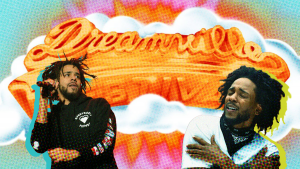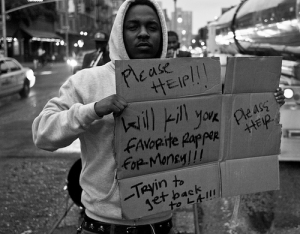
Graphic torture scenes, sexual exploitation and gruesome murder seem to be the makings of a “Saw” movie, not a critical darling.
Yet somehow “Slumdog Millionaire” director Danny Boyle makes every action, no matter how shocking or trivial, seem poignant and beautiful, while conquering the cliches that fill most other films today.
In “Slumdog Millionaire,” Jamal, an 18-year-old contestant on the Indian version of “Who Wants to Be a Millionaire,” (played with raw emotion and naivety by Dev Patel), is accused of cheating and consequently tortured by police officers.
To reclaim his innocence, which seems to have been lost back in the slums of his childhood, Jamal takes the officers through a series of flashbacks, each offering insight as to just how this uneducated boy from the slums rose to a national hero and millionaire.
These flashbacks introduce various characters, though never overwhelming with the material it presents, and depict Jamal maturing from a precocious little boy to a streetwise young man.
The two child actors portraying young Jamal and his quick-witted older brother, Salim, are so adorable and talented that every action they execute, no matter how outlandish or horrifying, forces the audience to feel for and bond with them immediately.
It’s also through the flashbacks that Latika is introduced. Jamal’s connection with her is instantaneous, starting in their childhood and continuing over the years, no matter the distance between them, forging a seemingly everlasting bond from the start.
While finding your soul mate and determining your destiny at such a young age can be perceived as cliche, it’s handled with such care by Boyle and acted so convincingly by all involved the unrealistic aspects are quickly forgotten.
Although central to the plot, the romance between the two in the film is never overwhelming or overtly sugary, with just the right amount of heartache and romantic gestures to keep any viewer’s interest.
Knowing Jamal’s fate from the opening scene never takes away from the experience, as Boyle works tremendously hard to keep the viewer’s attention fixated on the screen. His perseverance pays off and the twists and turns and compassion the audience has for each character are what make the film.
As Jamal’s fate is played out and his story enchants all of India, the viewer, too, feels like one of his own, captivated by his story and pulling for him to succeed in every sense of the word.
Patel isn’t the only shining star in the film. Freida Pinto, the ravishing beauty playing the older Latika, mesmerizes the audience every time she is on the screen.
Anil Kappor, a Bollywood star portraying the show’s host, oozes with sleazy perfection, capturing the attitude of the quintessential game show host.
To make the jobs of these gifted actors easier, Boyle paints a stunning depiction of India behind them.
Even with all the critical attention, “Slumdog Millionaire” has spurned criticism for its portrayal of the Indian slums.
To a westerner, however, this illustration appears to envelop the heart and soul of the nation.
Whether running free through streets overflowing with garbage or sprinting to safety to save a life, each scene evokes emotion from the audience.
Though by the end, many of these situations seem too coincidental, it never stops “Slumdog” from tugging on your heartstrings, forcing you to care about “Who Wants to Be a Millionaire” all over again, just like it’s 1999.




